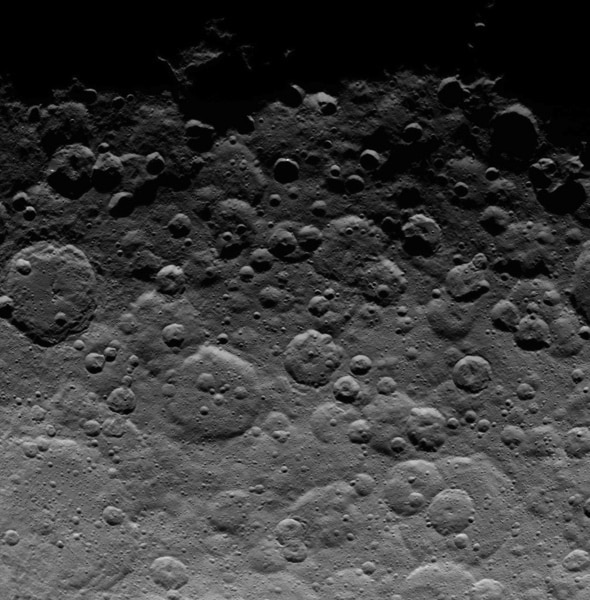Create a free profile to get unlimited access to exclusive videos, sweepstakes, and more!
Life in the Asteroid Belt Is Rough

Being a large object in the solar system means getting brutalized over the years, pummeled by millions of impacts. Some objects wear it well; Earth, for example, has an active surface built up by volcanoes and eroded by continental subduction, rain, and wind. After a few million years impact craters usually get worn away.
Other objects are active in other ways; undersurface oceans like on Enceladus and Europa tend to erase scars as well.
But airless, static bodies tend to proudly display their scars. And when you live out in the asteroid belt between Jupiter and Mars, you get a lot of them.
A lot.
That picture above is not of the Moon; it’s Ceres, the largest asteroid. At 950 kilometers across, it’s the largest target in the entire belt, and not surprisingly covered in craters. This image was taken by the Dawn spacecraft on June 24, 2015, from a height of 4,400 kilometers above the surface. It shows the part of the asteroid just on the edge of sunlight, the day-night line astronomers call the terminator. The craters on the edge of this region see the Sun low in the sky, so shadows are long, and elevated features (relief) are more easily seen. My favorite part is the one crater rim near the top right just high enough to poke into sunlight; everything else around it is in the shadow of night.
JPL just put out a video tour of Ceres using imagery from Dawn, and it's pretty cool. Watch:
You can also have some fun poking around at an interactive rotating map of Ceres put together by Google engineer Ian Webster.
There’s a lot about Ceres we don’t know, but Dawn’s journey is our journey to understanding. What are the bright white spots seen, some in craters and some not? Are the reports of hazy features—suggesting outgassing—real, and confirmable?
We may know soon. Dawn has already lowered itself into a tighter orbit, moving a week after the image above was taken to a height of 2,300 kilometers. In mid-December, it will lower itself again down to an altitude of just 375 km. The resolution in the images will increase by a factor of more than 10 over the picture above.
A lot of scientists are hoping that will be enough to get the detail they need to solve some of the nagging questions this gigantic ball of ice and rock has been posing. And they are legion.
If you want to keep up with the mission’s status, check out the Dawn Mission Status Updates, and read the well-written and quite enjoyable Dawn blog. And you can always peruse the phenomenal images taken by Dawn as well. This is a great mission, and it’s doing great work.


























